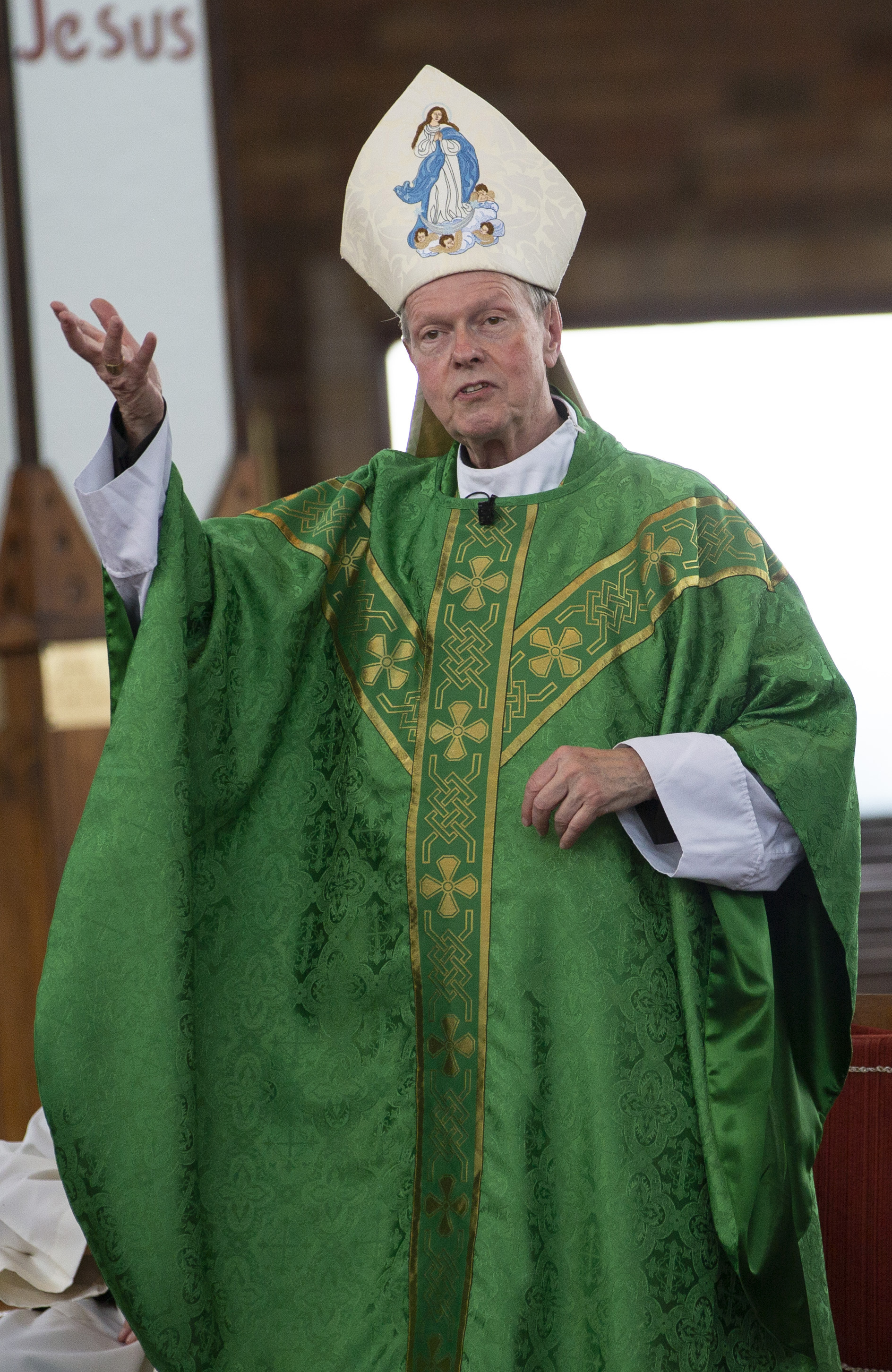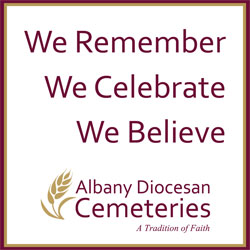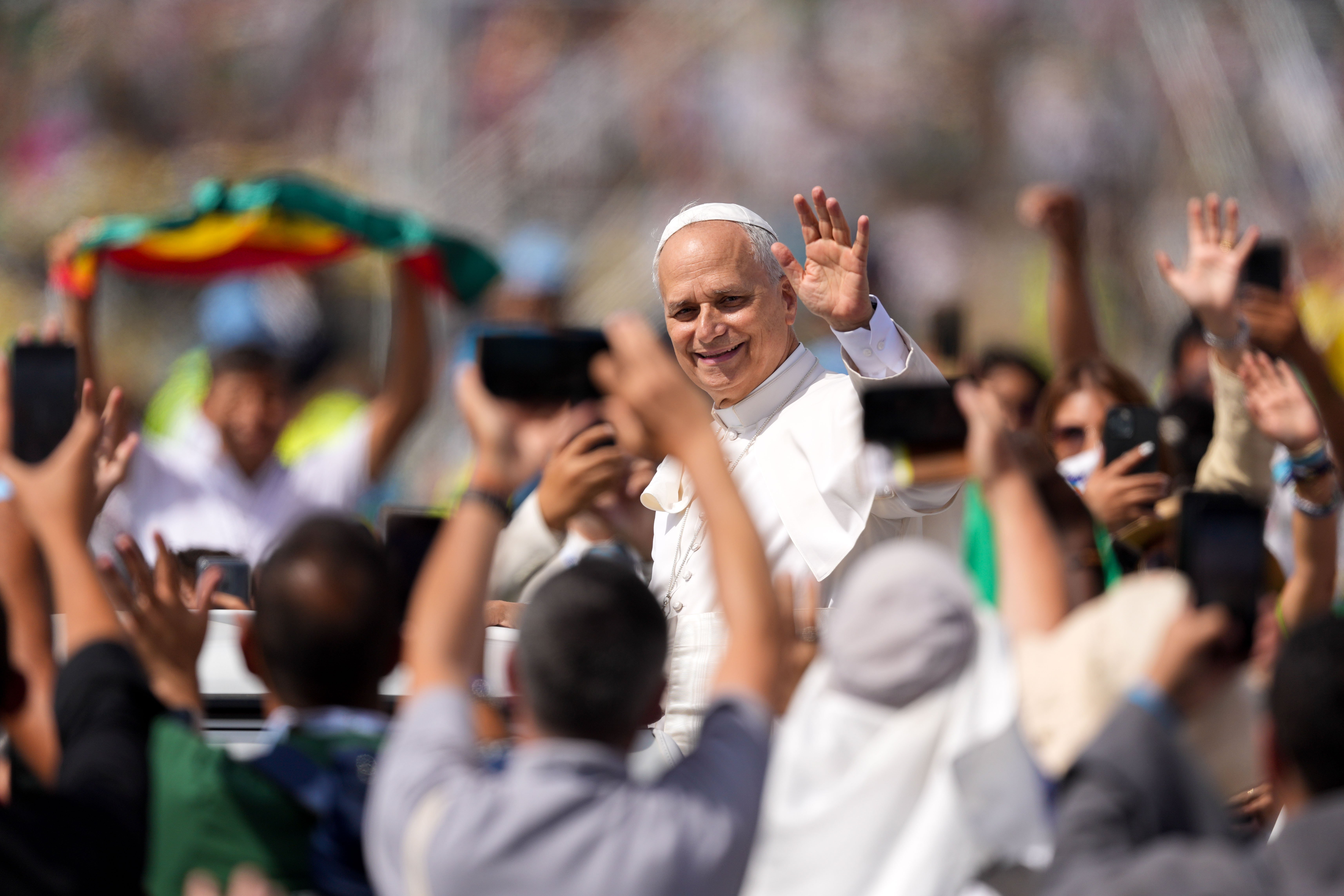April 6, 2018 at 1:53 p.m.
Troy parish marking 125th
While Bishop Howard J. Hubbard shepherds all of the people of the Albany Diocese, the Catholics of St. Patrick's Church in Troy consider him to be "their bishop."
That's because he grew up in the parish. And he's not the only bishop the parishioners claim as their own. Retired Archbishop Joseph Ryan was once associate pastor there.
The two will return to St. Patrick's on Oct. 25 for a noon Mass marking the 125th anniversary of the church. The Mass will be followed by a reception in the school hall and a celebration dinner at the Franklin Plaza. There will also be a reunion on Oct. 24 for anyone who attended St. Patrick's School.
'Our' bishops
When it comes to Bishop Hubbard and Archbishop Ryan, the parishioners have a sense of pride, said Rev. Thomas Kelly, pastor.
"They are their bishops," he said. "They remember them. Some of the older parishioners remember Bishop Hubbard as a lad."
Archbishop Ryan not only served as assistant pastor in the 1940s but also gave the homily at the parish's Centennial Mass in 1971.
Major events
According to Sister Carol Anne Porter, CSJ, principal of St. Patrick's School, the anniversary events are attracting people from a wide area. "We have people coming from out of town. People are even coming from Connecticut," she said.
Of the Mass itself, Father Kelly said, "If it's anything like St. Patrick's Day, we'll fill the church." The annual St. Patrick's Day liturgy draws close to 1,000 people.
Parishioner Norine Murray is looking forward to the celebration. "I was born in the parish, my mother was born in the parish and my grandparents were married there," she said. "There's quite a tradition."
When thinking of parish traditions, the annual St. Patrick's Day celebration is high on her list: "It's always the Sunday previous to St. Patrick's Day. It's a solemn Mass. We have pipers lead the procession. People come from all over. The people are very steadfast in their faith. Our neighborhood has changed, but the spirit of the parish persists."
History
The parish was formed in 1871 when St. Peter's parish in Troy was divided. The founding pastor was Rev. John Joseph Swift, and the original church was built on Vale Avenue, later Sixth Avenue. According to the parish history, "September, 1872 found a neat little rectory on River Street and the first church of St. Patrick."
Other important dates in parish history include:
* On May 27, 1883, the first meeting of the Building Fund Society was held. It was organized to unite the parish to make a weekly offering for the support of building a school.* From 1886 to 1911, the parish acquired property. By 1911, it owned 189 feet fronting River Street and the same amount on Sixth Avenue.
* The school opened on Sept. 5, 1887. Seven Sisters of St. Joseph taught at the school, as well as Prof. Thomas McMahon. Sister Blanche, who later founded The College of Saint Rose in Albany, came to the school as directress in 1898.
* In 1908, the first donation toward the construction of a new church was made by the alumni of St. Patrick's School, who contributed $100. In 1912, ground was broken for the new church.
* While the interior of the new church was not yet completed, more than 2,000 people assembled on March 17, 1914 for St. Patrick's Night and a glimpse of the new church.
* On October 22, 1917, St. Patrick's Parochial Hall was formally opened in the old church building. It became the center for parish activity.
* On December 6, 1925, 4,000-plus people turned out to witness the solemn ceremony of the blessing of the chimes by Bishop Edmund Gibbons. Each bell was inscribed with a dedication name. Besides being dedicate to several saints, bells were dedicated "in thanksgiving for the blessing of a Catholic education, to the honor and glory of true womanhood as exemplified by the Ladies Catholic Benevolent Society; and The Bell of Peace is dedicated to the heroic dead and patriotic living who served in World War I."
Night of fire
Tragedy struck the parish on Jan. 27, 1940 when fire destroyed the school, the old church and part of the rectory.
The parish history described the event: "Irreparable loss became apparent when it was found that extensive damage was done to Father [Matthew] Merns' library. He had collected an extensive and valuable library during his many years in the priesthood. His two assistant priests, Reverends Thomas J. Quinn and Theodore Black, rushed into Father Merns' study after the fire was discovered and with the aid of fireman pulled the heavy rugs off the floor and covered the cases of books. Canvas was thrown on top of the rugs but even with this care, water soaked through to the books. The fire spread so rapidly that it was impossible to carry anything from the rectory."
After the fire, students were bused temporarily to St. Jean's School for the rest of the school year. Parts of the school were salvaged and the rest of the school was reconstructed.
Key to Troy
An important part of St. Patrick's history, according to Father Kelly, is the influence it has had on other parishes. He explained that many people who grew up in the parish are now in leadership positions in other parishes of the Diocese.
The parish is made up of approximately 300 families. Some of the active groups include the parish council, the lectors, Eucharistic ministers and the Legion of Mary.
Of the parish, Father Kelly said: "We're an inner-city parish striving to be a witness in the inner city. We're still alive and viable and doing the work of the Church."
(10-23-97) [[In-content Ad]]
- Washington Roundup: Russia-Ukraine negotiations elusive; immigrant Miami priest wrongfully detained
- Neb. bishop concerned about ’human dignity’ of detainees after governor plans ‘Cornhusker Clink’
- US Catholics’ donations help equip catechists in southern Africa to share the faith
- Florida bishops once again ask DeSantis for clemency on a scheduled execution
- Ahead of canonization, new statue of Blessed Carlo Acutis unveiled in Assisi
- Christians are called to help world find peace, reconciliation, pope says
- Ministries to DC homeless share concerns about their welfare amid encampment removal
- UPDATE: ‘Cruel hoax’ active shooter alert disrupts Villanova’s opening Mass
- AI ‘resurrections’ raise ethical issues, prolong grief, say Catholic experts
- On the road to Our Lady: How pilgrimage taught me the power of community







Comments:
You must login to comment.